The queen of the meadow. A delicious plant steeped in history and lore, Meadowsweet flowers are mostly known for meadowsweet tea. There's a lot more to using this sweet herb, and the dried flowers can be used as a substitute for almond flavoring in the kitchen. Read on and I'll explain the fascinating history, traditional uses, and how you can use it at home.
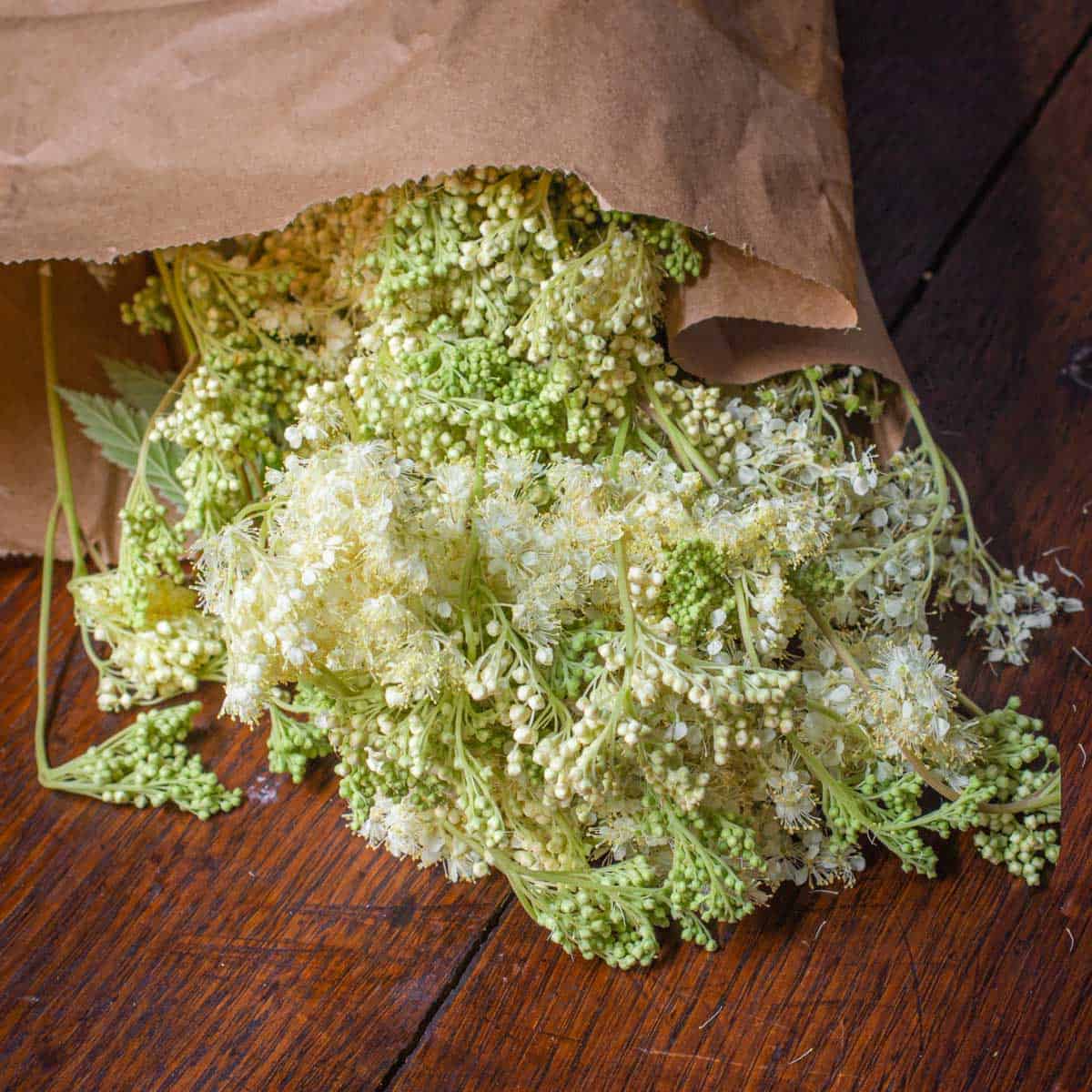
Meadowsweet Identification
Meadowsweet (filipendula ulmaria, formerly Spiraea ulmaria) is an herbaceous perennial plant in the Rosaceae or rose family. Native to Europe and the Near East, it's a garden escapee, introduced and naturalised in North America.
Often mistakenly described as a wild flower, the plant is technically a shrub. They appear as a singular, tall plant with clusters of white flowers ranging around 3-6 feet in height. The small, white flowers appear during the summer, eventually giving way to tell-tale green seeds.
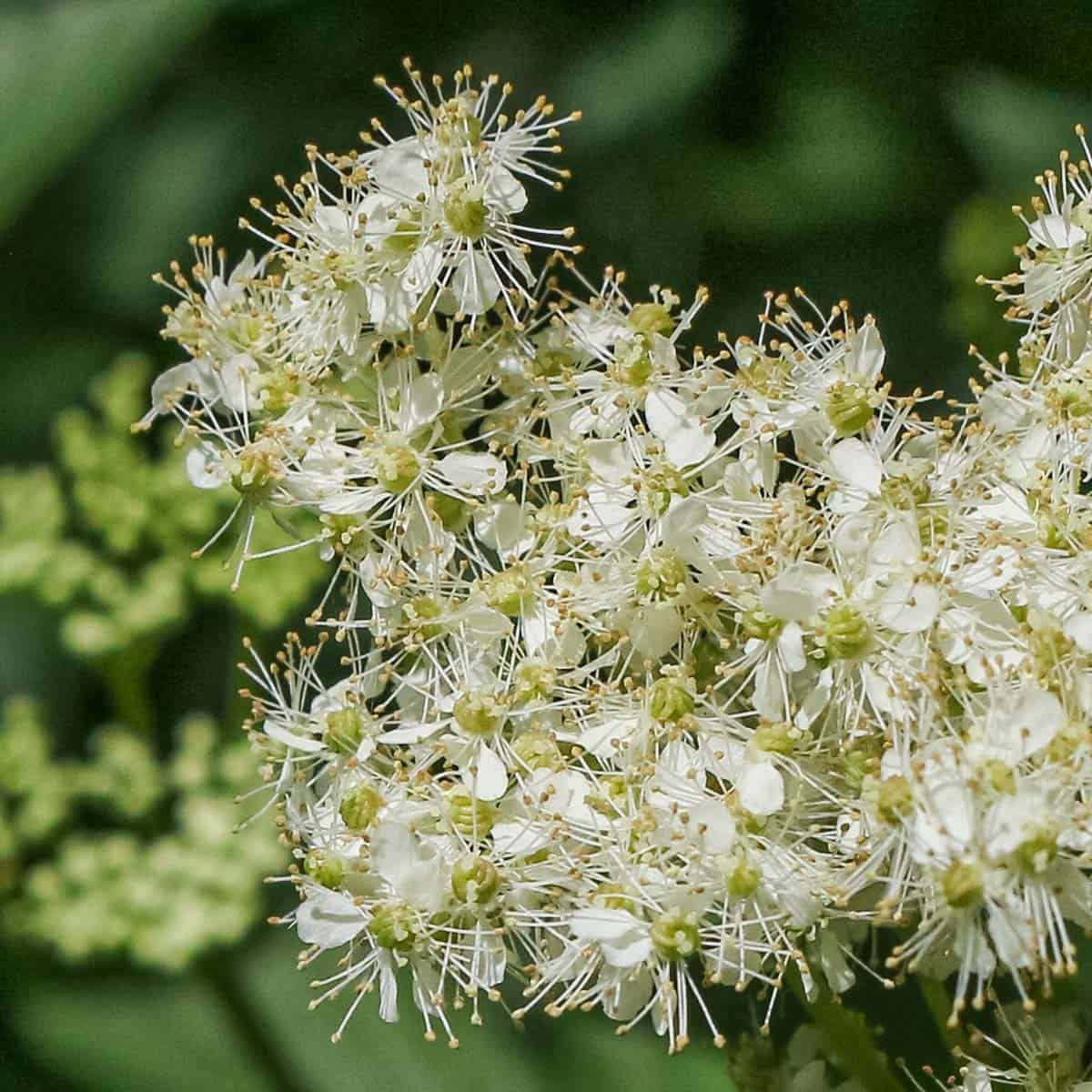
For me, the long, ropey and pinkish red flower stalk void of blotches, long distance between the leaves on the stem, and irregularly shaped flower clusters that aren't in an umbel shape like wild carrot are dead giveaways.
Identification to species can be difficult as F. ulmaria has hybridized with native species like Spirea alba, which is also edible, medicinal, and can be used as I describe here.
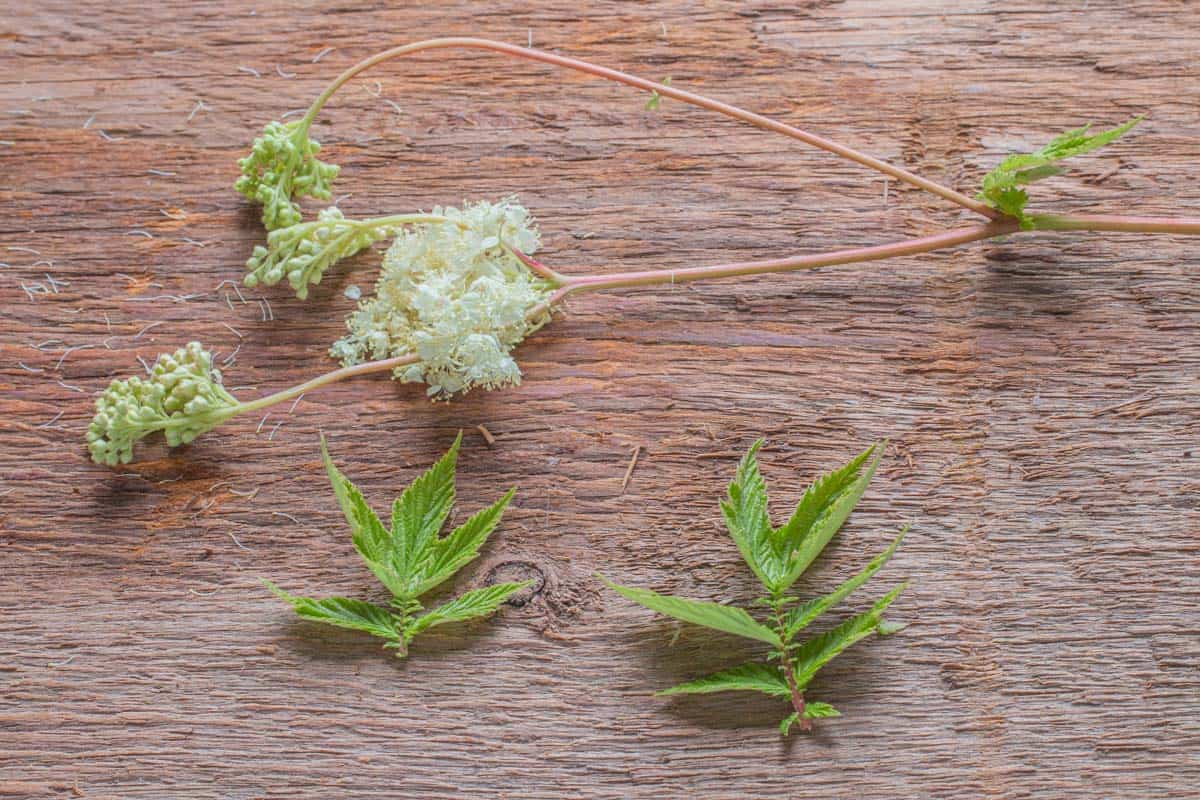
For identification, pay attention to the shape of the light green leaves, the ropey, evenly pink stem, and the shape of the flowers. The flowers smell very sweet, and strongly of almond when used in cooking.
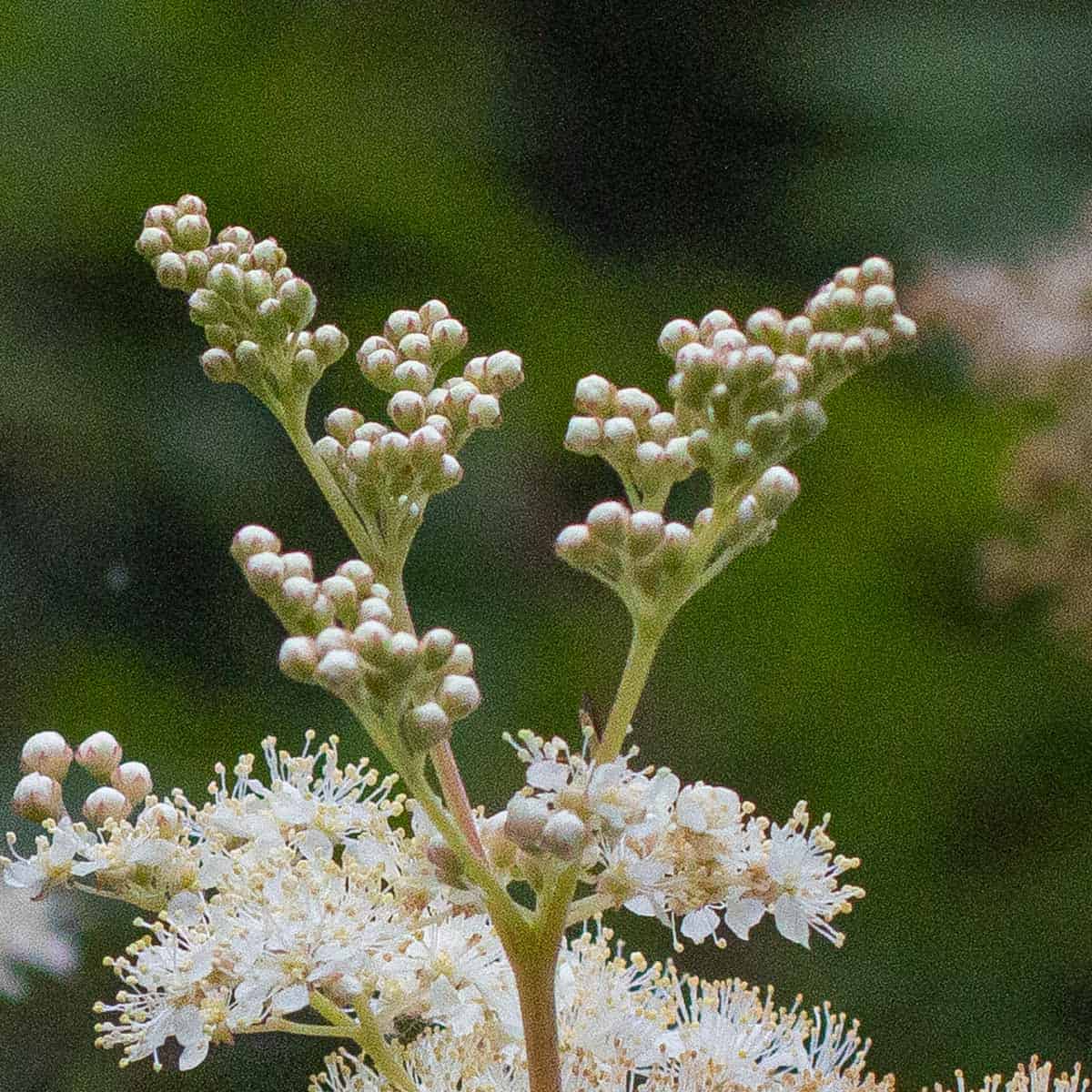
Where is Meadowsweet Found?
Meadowsweet grows in damp meadows and areas near water, as well as wet woods like fens, and near lakes and rivers. In Minnesota I commonly see it on the North Shore in large colonies on roadsides, along rocky coasts, and tree lines filled with pine and birch.
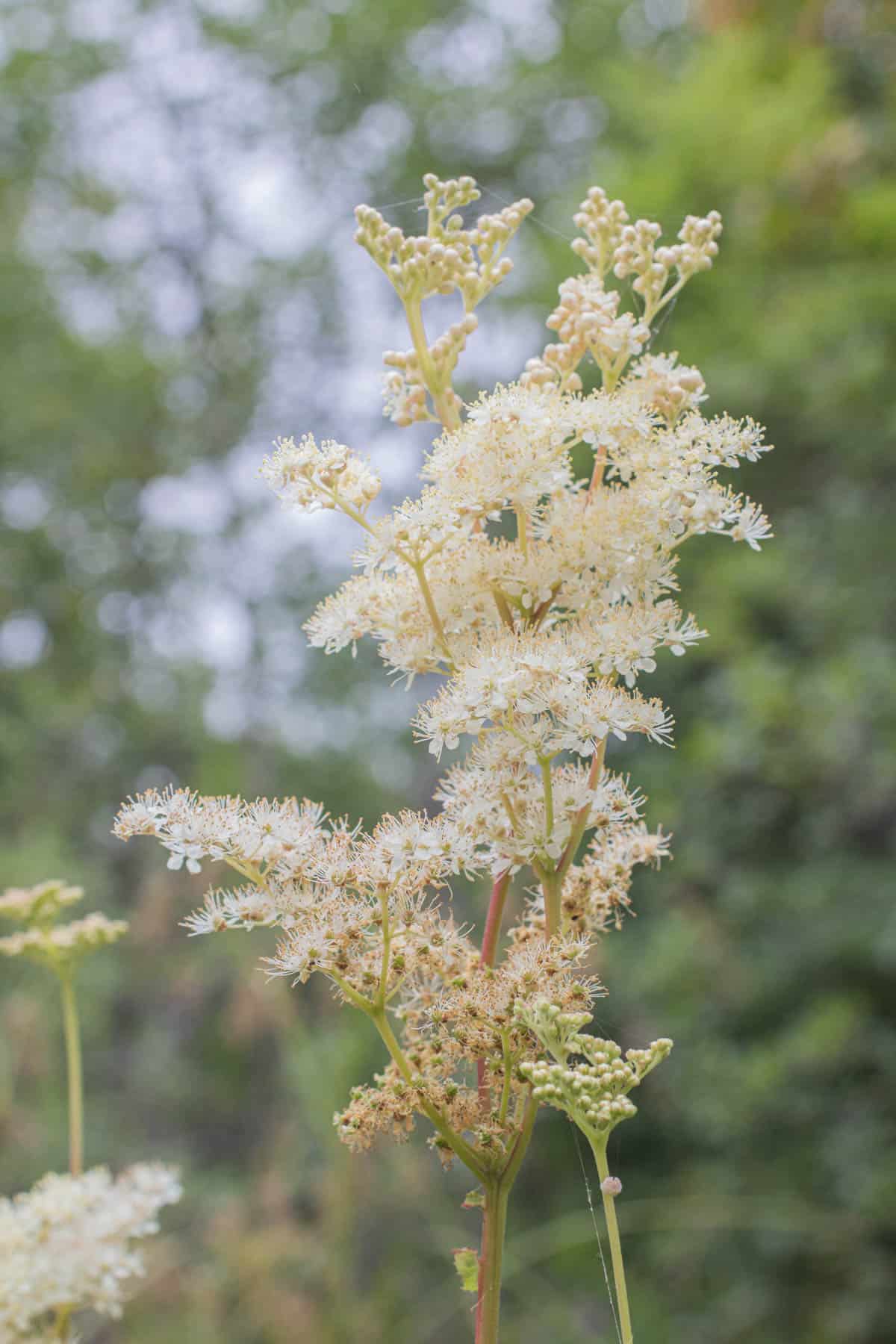
One of the best ways to identify the plant is meadowsweet's aroma. The smell of the flowers in bloom is intensely sweet with notes of almond and can be smelled carried on the wind.
Common Names
Alluding to it's illustrious history, the plant has many names, including:
- Bridewort
- Meadow queen
- Lady of the meadow
- Dollof
- Meadow-wort or mead-wort
- Pride of the meadow
Meadowsweet History
The name is derived from from the Anglo-Saxon word ‘meodu-swete’, translating to ‘mead sweetener’ as it's been used to flavor mead, wine, vinegar and beer since ancient times. According to Catriona Stewart PhD MSc, the plant has been used for over 5000 years in Scotland to flavor cordials, herbal teas, and mead.
It's reputed to be the favorite flower of Queen Elizabeth 1, and apparently she, like many others, enjoyed the plant strewn in her house and bed chambers as a sort of pot-pourri. It was also used in bride's bouquets, and flower arrangements. I used to gather the flowers for table settings when I was the chef of Lucia's restaurant.
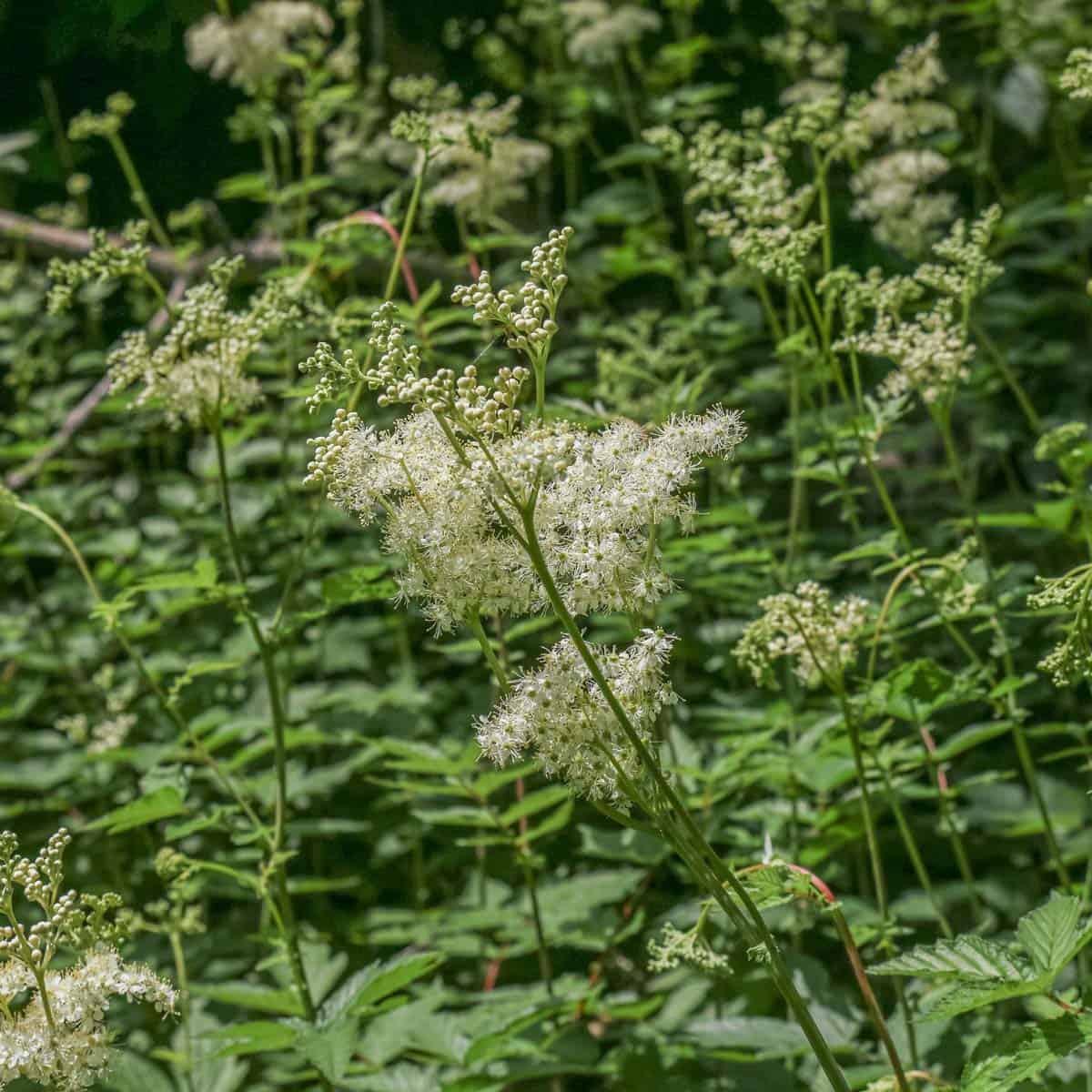
In the book Britain's Wild Flowers: A Treasury of Traditions, Superstitions, Remedies and Literature the author mentions meadowsweet was a sacred druidic herb, noting that, in folklore, the sweet aroma granted the power of second sight and, the ability to speak with fairies. There's also accounts of the plant being used in traditional burials across Wales, Ireland, and Scotland.
Chaucer, in the book "A Knight's Tale" described the plant as "medwort"-one of many ingredients in the drink known as "save".
Traditional Meadowsweet Uses and Benefits
As a medicinal plant, F. ulmaria has a long history of use as a homeopathic, and has been used to help with:
- Joint pain, gout, and arthritis
- Calm upset stomachs
- Bladder and urinary tract problems.
- As a general anti-inflammatory.
- Encourage perspiration and break fevers with common colds and flus.
It goes without saying that people with an aspirin allergy should avoid the plant. I also consider most medicinal plant evidence to be anecdotal. While I don't doubt the efficacy of medicinal plants, using them as medicine should be done in collaboration with your general practitioner or family doctor.
Salicylic acid
Meadowsweet, wintergreen, slippery elm, willow and birch bark contain the compound salicylic acid, which is the compound responsible for aspirin. According to the academic research paper Hormone Metabolism Signaling In plants:
"In 1897 Felix Hoffmann working in the Bayer pharmaceutical company synthesized acetyl salicylic acid (originally produced by a French chemist, Charles Frederic Gerhardt, in 1853), which became known as Aspirin, to reduce the side effects."
Salicylic acid is also used in dermatological products to treat psoriasis and other conditions. While I can't speak to the other benefits of the plant, this one I can as I personally use some products containing the compound.
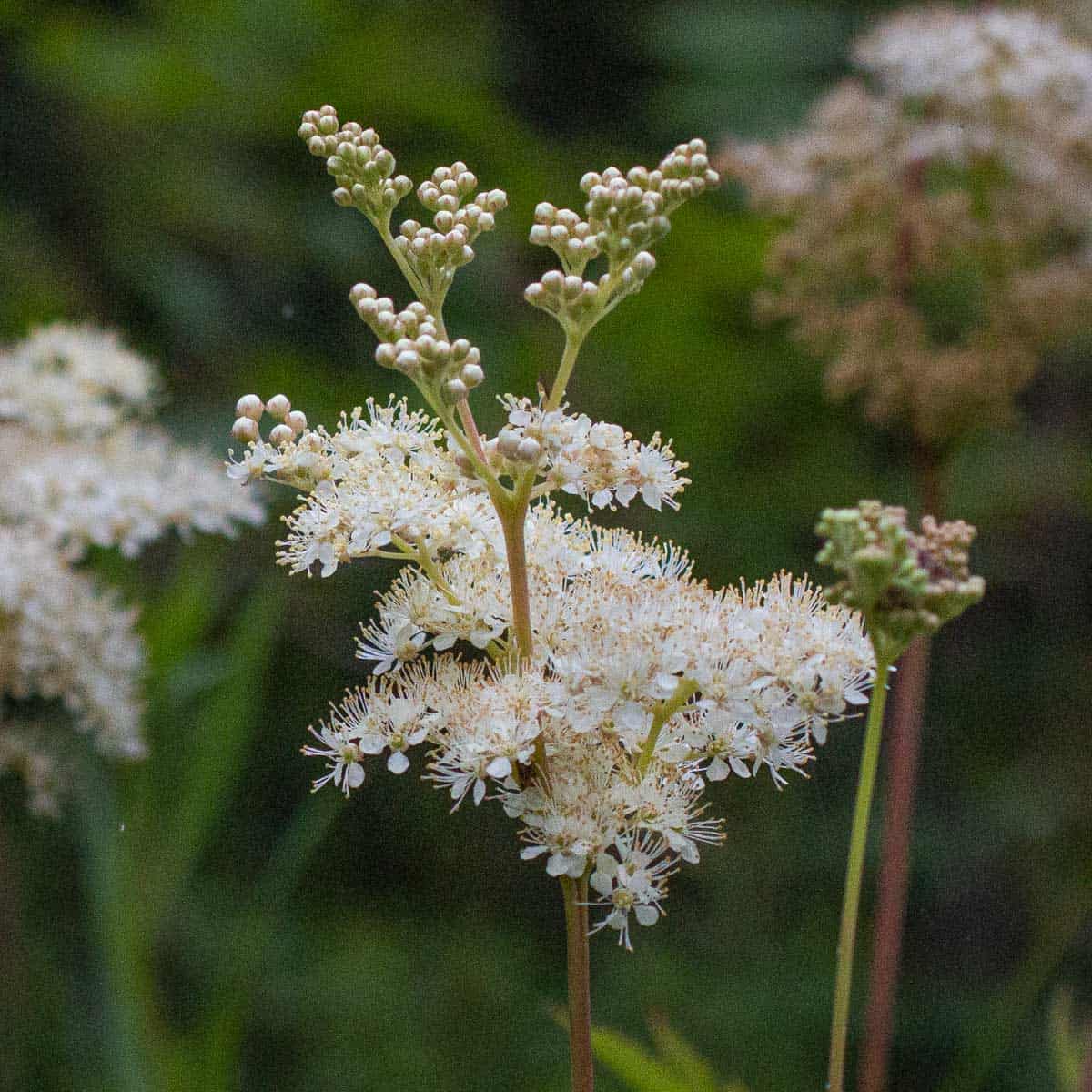
When to Harvest Meadowsweet
In the Midwest, the flowers will be ready to harvest from mid to late July. To harvest, cut fresh flowers and put them in a zip-top bag and refrigerate. Meadowsweet flowers will stay fresh for a week.
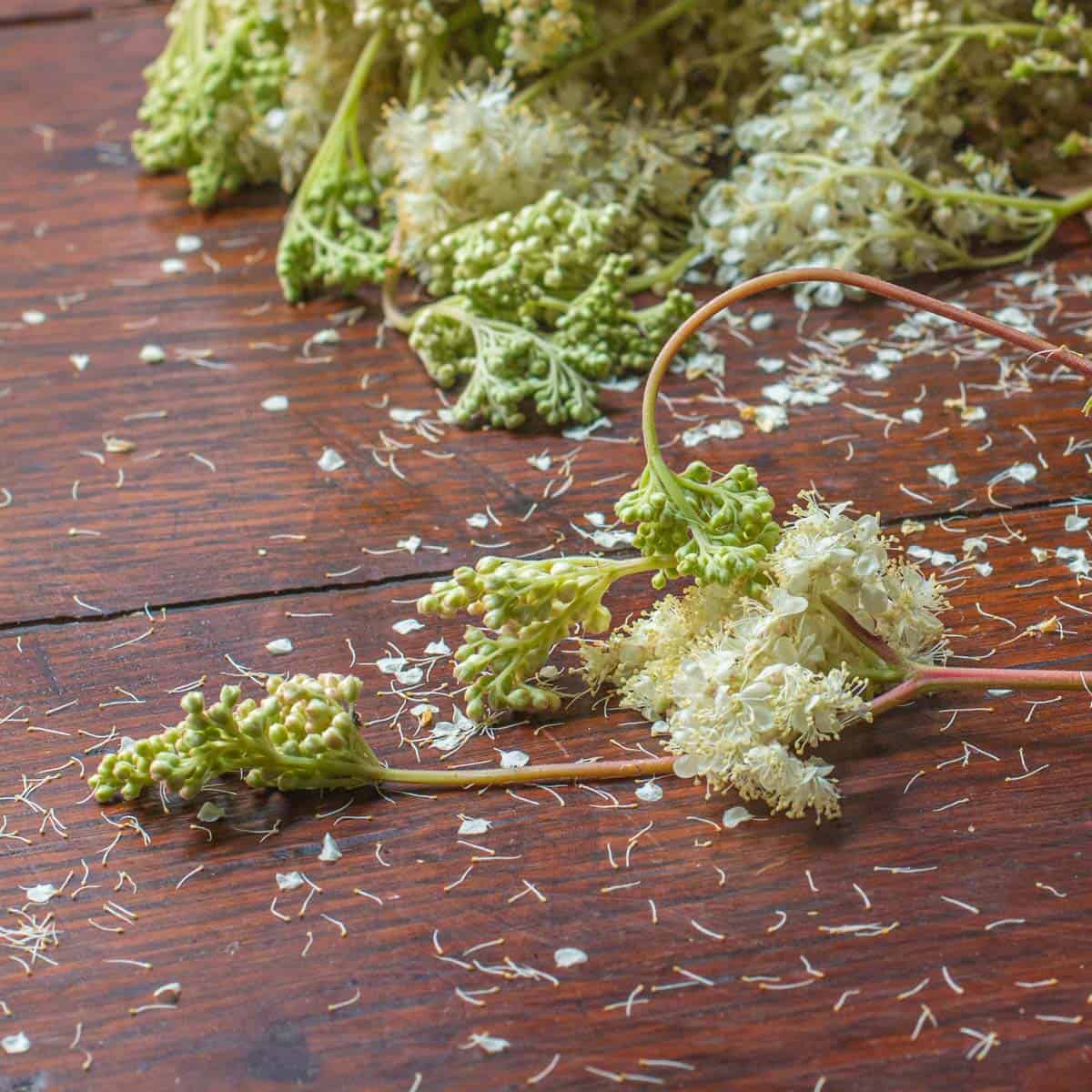
I typically dehydrate mine for future use which works well. Dried meadowsweet flowers will seem crumbly and brittle, but there's a lot of flavor in them.
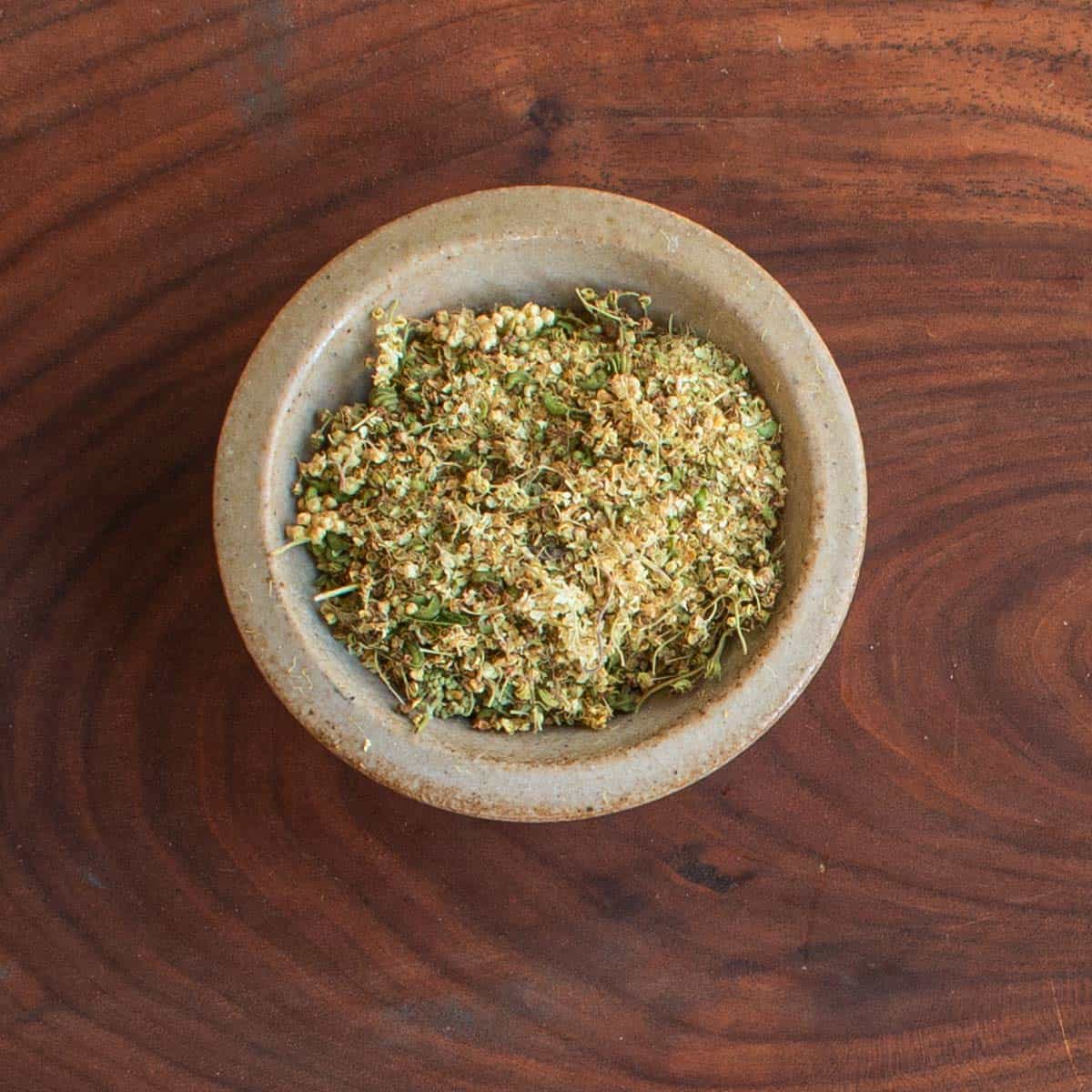
Cooking with Meadowsweet
Traditionally the plant is used to make tea and flavor liquids. The flavor of meadowsweet is excellent, and I find it slightly reminiscent of elderflower, but with almond tones which I assume are from it's rose-family heritage.
This is similar to how apple seeds, rowan buds, and cherry stones have an almond flavor. You can read more about that in Cherry Pits: A Traditional Almond Seasoning.
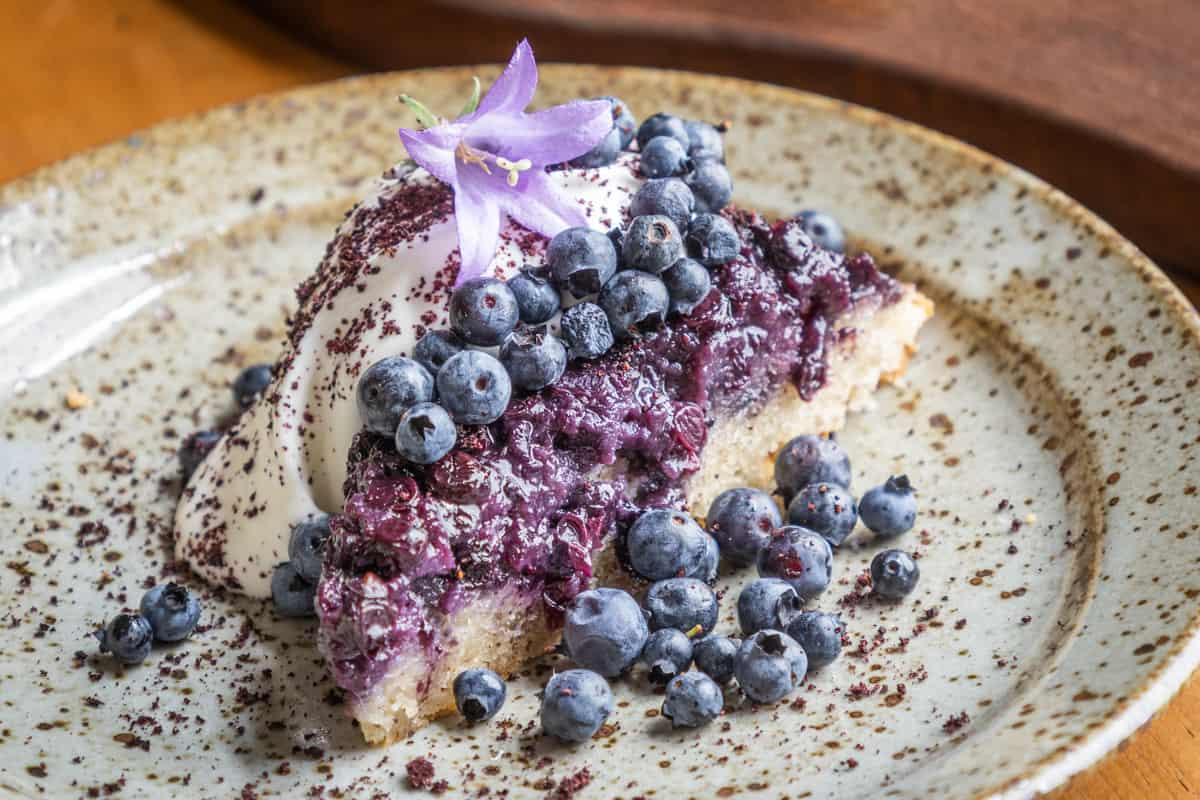
In the kitchen the flowers can be used in any recipe that calls for elderflowers. I typically use it to infuse cream-based desserts. It's use in tea insinuates the flavor is water soluble, and I've read in Europe jams may be flavored by adding some of the flowers wrapped in cheesecloth while cooking.
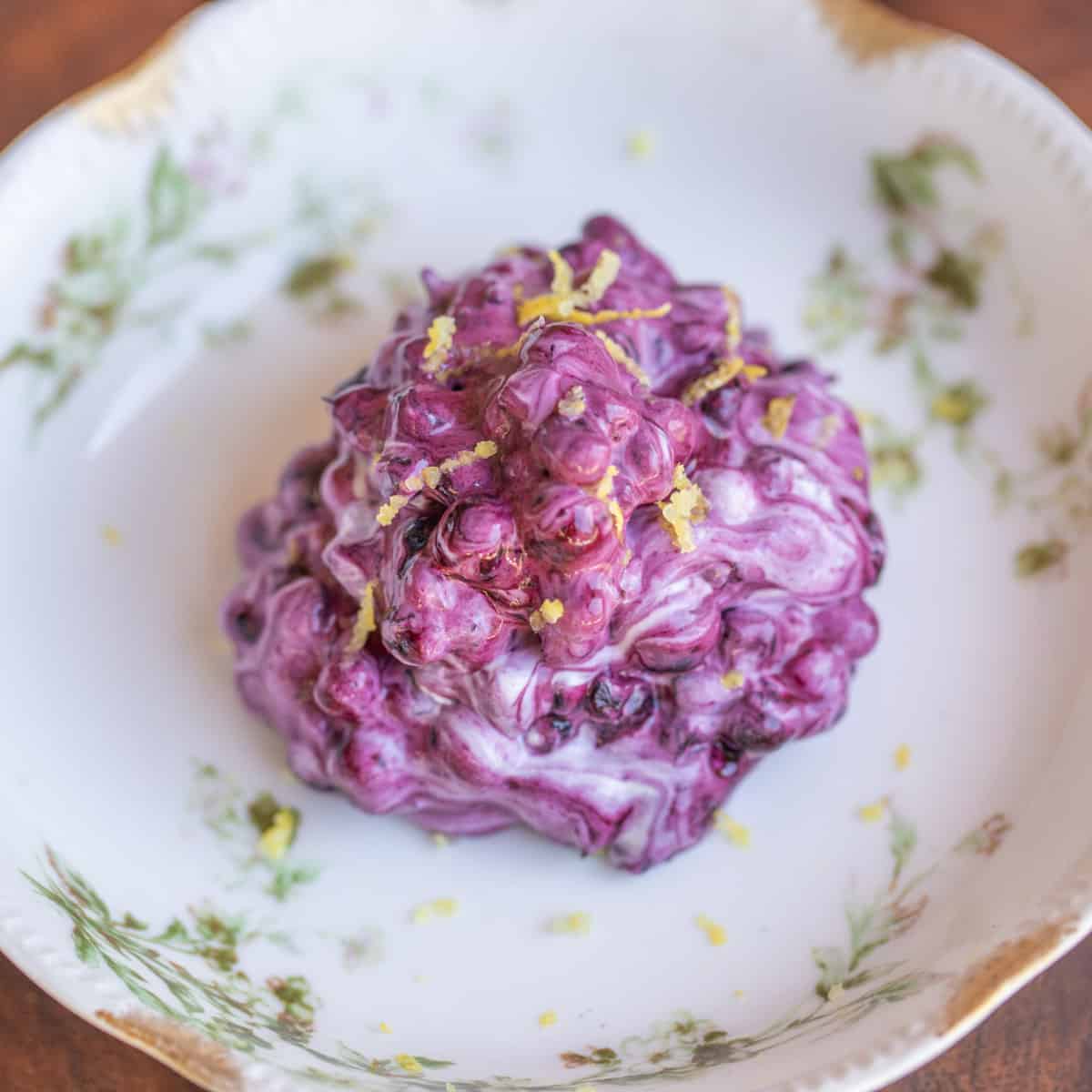
Chef Magnus Nilsson cooks with meadowsweet flowers to make a candy used as a mignardise, a small candy served after dinner. In Europe, the plant was often used to flavor mead, which is where the name mead-wort comes from.
Meadowsweet Recipes
You can infuse the incredible almond aroma of the flowers into simple things like panna cotta and ice cream using a meadowsweet-infused cream.
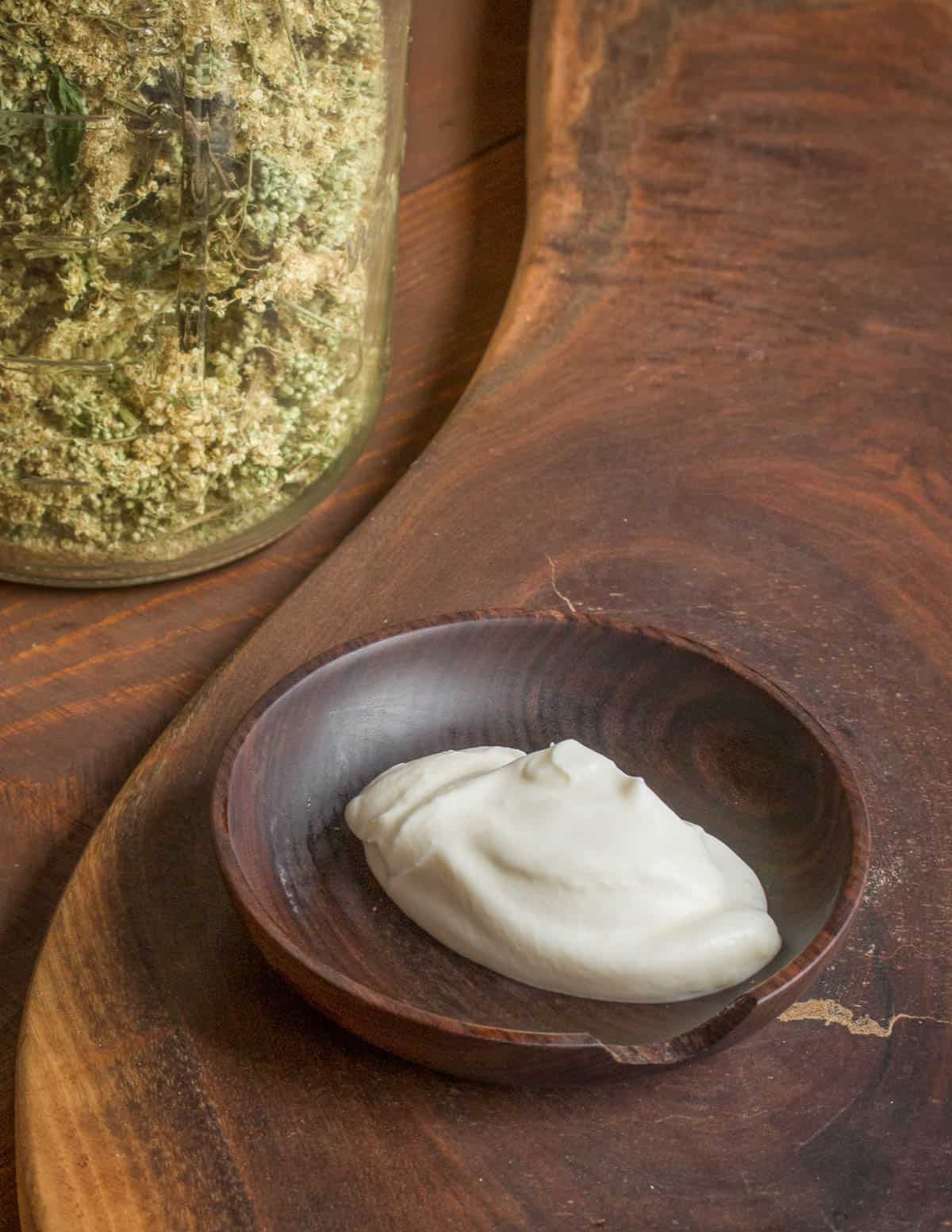
- To make meadowsweet cream, warm some heavy cream, then mix in dried meadowsweet flowers (roughly 1-2 ounces per qt) and chill. Strain the next day and proceed with your recipe.
- To make meadowsweet tea, combine 2 grams (1 tablespoon) of dried flowers for every cup of boiling water. Allow the tea to steep for 5 minutes, then strain.
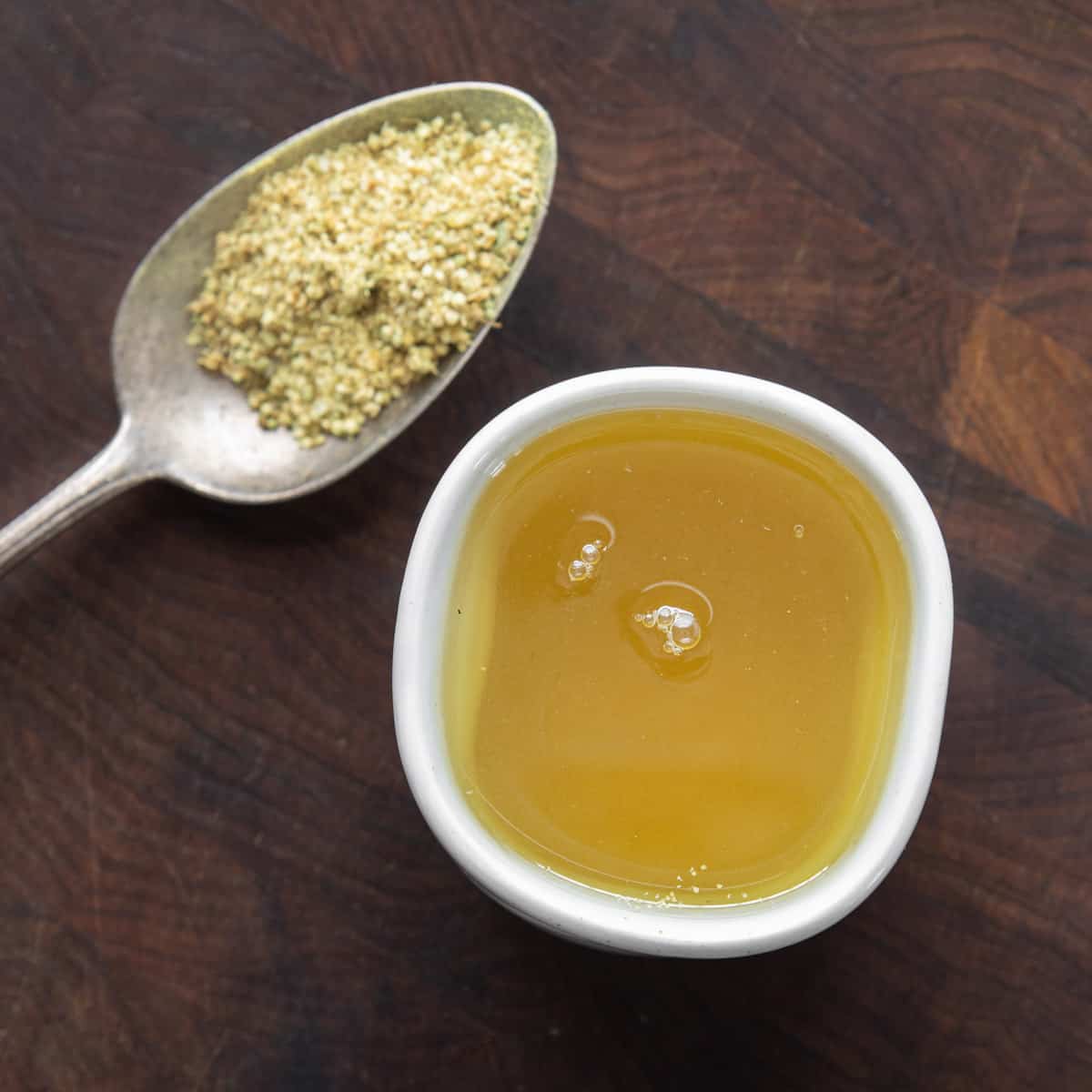
References
A Modern Herbal | Meadowsweet: Brittanica.com
Britain's Wild Flowers: A Treasury of Traditions, Superstitions, Remedies and Literature
Hormone Metabolism Signaling in Plants: Jiayang Li, Chuanyou Li and Steven M. Smith

jakki cunningham
Hello from Scotland.
I have been foraging in my local area and in Loch Goil for the last few years. I am only now beginning to attempt a few mushroom varieties, wood ears, elf cups inkcaps, weirdly urban oysters, I have tried lots of the things people typically forage, Elderflower, elderberry, sorrel, ramps, lots of berries (yew is my favourite?), Meadowseet seems to be thriving here, in the last year, I'm not sure why. Have you ever found chaga? I spent about 3 months obsessing about it last year, but no find.
Alan Bergo
I've found chaga, it's plentiful up here in WI. FYI, most parts of Yew (Taxus spp) are toxic.
Jacqui
Well actually, though many parts of the yew (needles, cones or "seeds", stems...) ARE highly toxic, the arils that surround the seed cone are not and they are traditionally gathered and used in parts of Europe. Personally I don't find them very interesting. The few I have tried were sweet and not much else. But I am interested if somebody finds them interesting enough to be a favourite. Perhaps I need to nibble from a few more trees. One simply needs to be VERY careful not to inadvertently swallow a cone/seed and to not eat them where impressionable others can see in case somebody decides to try too without knowing the dangers.
Alan Bergo
Yeah, I have some friends who have eaten them, but with so many people being new to the craft it's not on my short list of things to suggest people experiment with.
Stephen
Can anything be done with the leaves? They have a really nice aroma when you rub them between your hands.
Alan Bergo
I can't speak to that. I've only worked with the flowers.
Jacqui
Yes, you can use the leaves as well as the flowers for infusions (tea) and for flavouring other beverages (steeped in wine as an aperitif, for example). I think it was leaves that were traditionally used for flavouring beer in the beer-making process. I have never used only leaves for flavouring the cream for panna cotta but I often toss in a leaf or two with the flowers.
Alan Bergo
Thanks Jacqui. I'll have to grab some leaves the next time I'm out.
Wnche Eltervaag
Yes. Recipe for Meadow Sweet concentrate: 0,9 liters water, 150 g meadow sweet young leaves, 0,5-0,7 liters sugar, 1 cinnamon stic, 0,5 teaspoon citric acid. Bring it all to boil. Then either # 1: Set aside for about 1 hour. Drain and bottle.#2: Simmmer for 20 minutes ( take out the cinnamon stic after 10 minutes) Drain and bottle. Delute with sparkling water for a refreshing summer drink!
Stephen
I love meadowsweet flowers. They smell like marzipan. I plan to attempt making a meadowsweet mead this summer.
Jeff
Alan, perhaps you have a few areas within the Twin Cities and surrounding areas in Minnesota where I can search for this and/or Elderflower? I am not really certain on good areas to look. Any help is appreciated.
Alan Bergo
Jeff, Elderflowers are EVERYWHERE right now. go find a park with woods, and ponds, and you'll find them. Honestly there's so many places it would be onerous to try listing them all, they're literally everywhere I go in the metro. Meadowsweet is not that easy, you'll need to go north for easily Identifiable patches from my experience. prepare to drive north for 2-3 hours for them, good time to pick is when serviceberries are popping.
Jacqui
Hi Alan,
I just found your meadowsweet flower posting (dreaming of summer I guess, the weather is foul here). First, sorry, it is NOT a member of the carrot family. It is a member of the rose family. It used to be called "Spirea" (before the taxonomists got their act together (whatever THAT means) and decided it was really Fillipendula), and it was the plant Felix Hoffmann first extracted Salicilic Acid from, explaining the name "Aspirin" for his modified invention (i.e., "from Spirea"). It is fabulous in panna cotta. And the flowers retain their perfume frozen, so it is possible to make Meadowsweet panna cotta also in winter.
Traditionally this plant was used to flavour mead. The common name in Norwegian and Danish means "Mead Herb" (though in Swedish it is Moose Grass - just goes to show who was making more interesting fermented beverages...)
And of course, because it is me, I steep the flowers in vodka. Really really good, and you get the hangover cure in the glass...
Alan Bergo
Thanks Jacqui, I feel like a bum for making that mistake. I don't know how that slipped past me, for some reason I was sure they were in the carrot family, but I was definitely wrong, and I should've known better with their almond smell. Thank you.